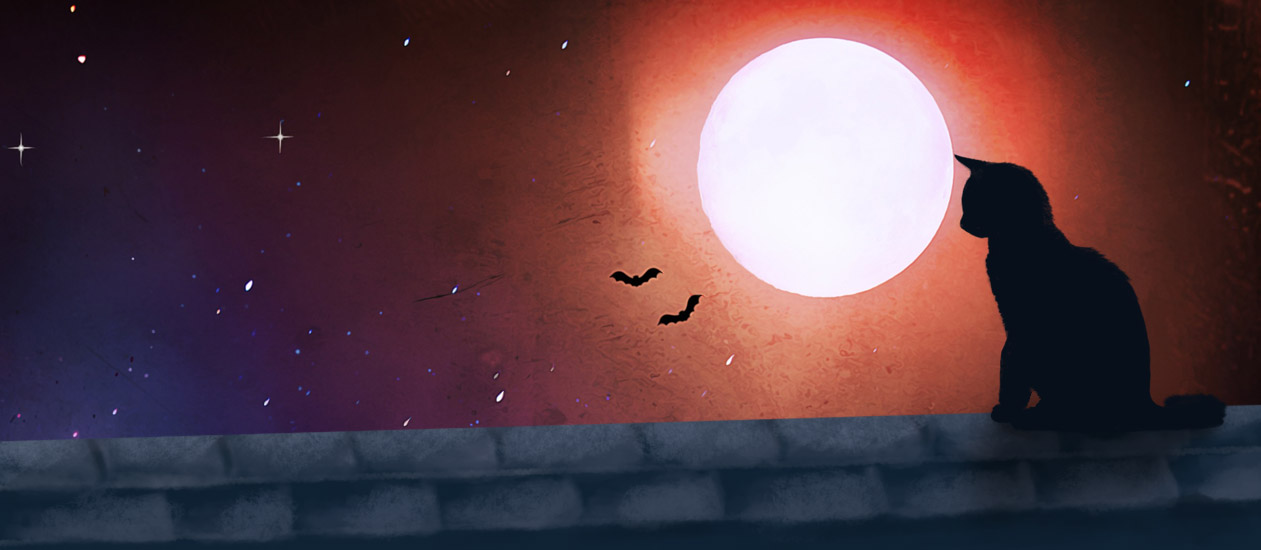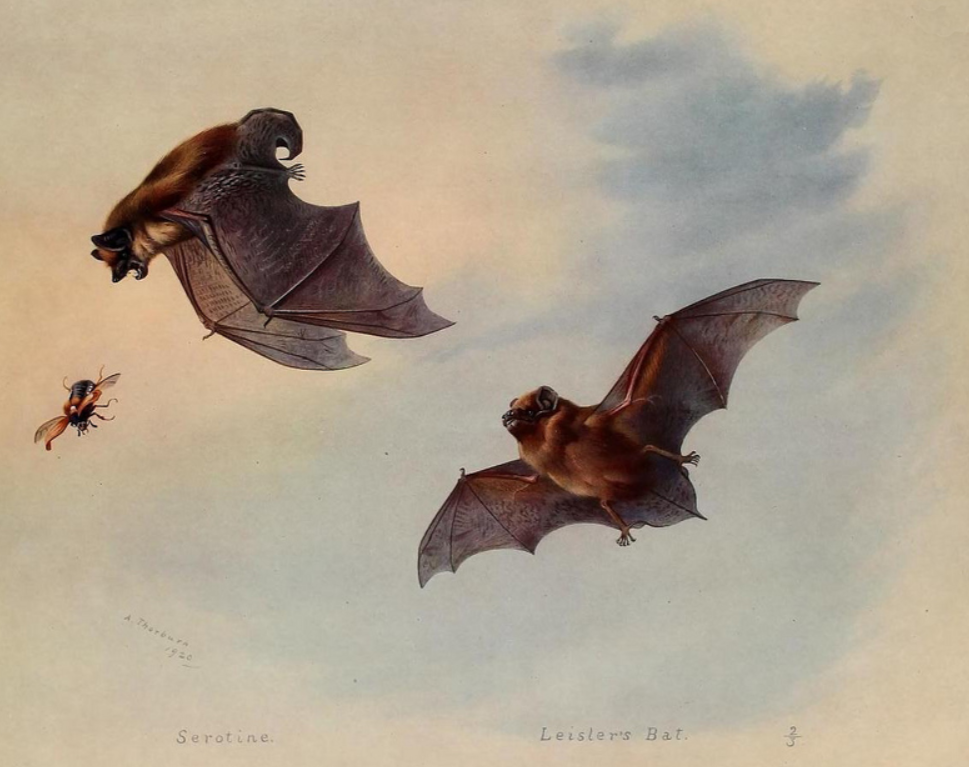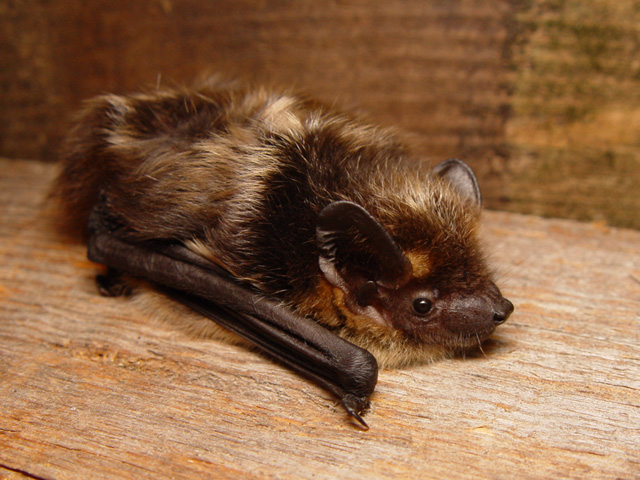Elevated Bats
The Laws of La Pénombre
I. Speak for the voiceless
II. Only in darkness are you free.
III. You are no servant of Men
IV. You shall eat no creature that speaks for itself
In a scattering of caves across the world, thousands of ghosts pour into the darkness to reach the gateway to the afterlife. The energy these ghosts give off in large numbers is known as vesanmer, and is the energy source that powers all magic in Earth.
When enough vesanmer is concentrated in a single location, such as what happens at the terminus of the highways where all ghosts gather together, the vesanmer in the air is powerful enough to impact the environment. When bats roost in caves with ghosts flowing beneath them, the constant exposure to vesanmer changes them. It makes them elevated.
Additional Information
Social Structure
Elevated bats largely live the way their voiceless cousins do, with some influence from an expanded capacity for empathy and emotional relationships. Significantly, they do not separate into maternity colonies after the mating season. Family groups stay together throughout the year - a trait enabled by them storing food in wicker baskets in cold, cavities of their cave throughout the year to ensure a steady food supply year round. This also keeps them from needing to migrate or hibernate the way their deaf cousins do.
They live in a colony. Only one colony of bats in any area is elevated, as they are the ones from the specific cave that gives them the magic to be so. Any stray bats that hang around long enough to become elevated are welcomed into the colony, even if they are of a different species.
Within the colony, they further divide into clans. Each clan traces descent to a common maternal ancestor. They mate for life, and the male joins the female's clan. The clans roost together in a common area of the cave.
They have no formal leaders, only elders. Young bats listen to the elders when decisions affecting the entire colony have to be made. If they have need one single leader to represent them, such as for dealings with humans, the elders vote among themselves.
Average Intelligence
Elevated bats have the same capacity for intelligence as humans. This is not always acknowledged by humans, because their different lifestyles means bats sometimes have selective education. Bats don't know much about farming techniques that are common knowledge for humans, but are experts in astronomy. Some bats are interested in human knowledge and seek out books to read or lurk in the rafters of university lectures, while others are happy to live traditionally.
About a quarter of bats are literate in human languages, but they also have their own pictograph language that can be found carved into trees or scratched into cave walls. Bat pictographs are not a one-to-one correlation with the human languages they speak - each pictograph is an entire concept and they are put together with a grammar of their own.
Civilization and Culture
Naming Traditions
There are three categories of names used by elevated bats. In order from most common to least:
- Nature-based names. Bats often give their young names related to the world around them or traits that prized: Leaf, Meadow, Swift, Dimmest, etc.
- Human-language names. Some bats like the sound of human names and use them. These, like all of the examples, are in the human language that bats speak, which is the one they overhear being spoken below. The Villars colony, e.g., speak French and use French names. They don't place the same importance on gender or gendered names as humans do, though, leading to bats with names that humans would say are the "wrong" gender.
- Names taken from human print. Bats are able to read, and occasionally see words they like in human printing such as posters or packaging. Without a real concept of what is being advertised, they sometimes adopt words into names, such as Circus, Sale, Imported, or Beans.
They further name themselves by their clan. Some example clan names are Swiftwing, Brightfur, Longnose, or Starfellow. If they ever travel beyond their home colony's range, they add the name of their home cave as a final identifying name.
A complete elevated bat name might be Birch Undercloud Villars.
Average Technological Level
Bats have what humans would call a "stone age" level of tech, but they understand a great deal more than they use themselves. They know how pathstones work and understand the concept of iron working, they simply have no use for the skills themselves. Even if they wanted to make metal tools, they have no ability to mine ore and lack the opposable thumbs to properly manipulate them.
The most advanced tech they regularly use is weaving. Using their mouths to manipulate grasses, they weave baskets they can use to carry items during flight (often working in tandem with another to lift the weight). They will also take sticks and use their teeth to whittle them into spears to use as protection against predatory animals.
Common Dress Code
Bats do not wear clothing, and doing so is shameful. Wearing clothing is seen as attempting to emulate human lifestyle, and goes against bat ideals. Still, young bats occasionally like to be rebellious by trying to wear rings as necklaces using bits of fabric as hats or belts.
Culture and Cultural Heritage
The goddess of the bats is known as La Pénombre in among the Villars colony, and has a similar name in all the colonies. As her name suggests, she known simply as "the darkness". She is the darkness behind the stars, who comes out after night to spread her comforting blanket across the land and make the world safe for batkind.
The darkness is their saviour, and all light is suspect. The sun is the greatest enemy, but the moon is also seen as a danger. The moon creates light at night, and light makes their lives harder. Meanwhile, their echolocation lets them see as easily on a bright night as on a moonless one.
Voiceless Bats
Bats that are not elevated - that is, 'normal' bats - are called 'the voiceless'. This refers immediately to the fact that they are unable to speak, but also implies a level of blindness to the world. Bats primarily 'see' the world at night through echolocation, and someone who cannot create echos is blind, and unaware of the world around them.The only light that is not suspect are the stars. When a bat dies, their spirit does not go underground that way human souls do. Humans live on the ground, and die in the ground. Bats, though, are creatures of the air. When one dies, their soul flies upward and becomes a star.
Bats do not have formal religious services or ceremonies. La Pénombre is their guardian deity, and observance of her happens in the stories mothers pass to their young in the roost or the prayers for protection a terrified bat thinks while fleeing an owl. Although there are no priests, all bats know The Laws of La Pénombre, which are passed down from elders with every generation. These laws outline how to be a proper bat.
I. Speak for the voiceless
voiceless bats are not to be tormented or looked down upon. Elevated bats should do what they can to assist a voiceless bat they see in trouble, such as intervening with a predatory animal or arguing to humans on their behalf.
II. Only in darkness are you free
Bats are at home in the night. Although human culture operates during the day, bats must not try to emulate humans bu shifting their schedules. Daylight is blinding to their sensitive eyes; they can see much more clearly at night with echolocation.
III. You are no servant of Men
Many times in history, humans have tried to get bats to work for them as couriers, spies, or any other task that could benefit from a very small creature able to slip through cracks. To be a proper bat, one must not give themselves to humans to be used like a tool.
IV. You shall eat no creature that speaks for itself
Bats are prey to many animals. Every time they venture out, they live in fear of attack. They have decided that no other sapient species should feel this way and will not kill anything that thinks. This includes humans are other elevated bats. They eat insects on the understanding that insects do not understand the world as they do, but if they hypothetically met a moth that asks not to be eaten, they must leave it be.
Bats are not blind, but they rely on their ears much more than their eyes. Most types of elevated bats are also some form of colourblind, and even if they weren't, they spend most of their time out at night, when colours are hard to see. Therefore, colours have no real significance in their culture.
They think of the world instead in terms of brightness to darkness, with darkness having positive connotations and brightness being full of danger and confusion.
History
Elevated bats have been around for as long as the caves have been - that is, for as long as humanity can remember. That hasn't changed humans' attempts to explain their presence with origin myths set relatively recently, however. For example, the popular French tales The Bat Children of Villars claims the bats originated only in the medieval age. Bats take great offence to this.
Bats are a proud species. One of their guiding laws is to not allow themselves to become servants of men, and they refuse any request to get involved in human affairs. Many generals over the years have hoped to use them to carry messages, but the answer is always the same: "We are not couriers for the flightless." There are very few things a human could offer a bat in exchange for service.
Their refusal to get involved means they have had minimal impact on human history. Their own history is fragmented. Elevated bats live only in the area around the caves that granted them sapience. If a bat were to mate with a voiceless bat, the offspring would only be elevated if it also grew up in the environment of the cave. Even then, an elevated bat would never have relations with a voiceless bat. It is deeply disgusting and taboo to them, in the same way humans view bestiality.
Because of this, elevated bats do not spread beyond the region of their caves. The colony that lives in the area around France's Villars Cave has very little contact with the colony around Ireland's cave.
(Stats given for the Villars colony of elevated bats, who are genetically serotine bats)
Scientific Name
E. serotinus sapiens
Lifespan
25 - 30 years
Average Weight
.6 oz
Average Length
15" wingspan




